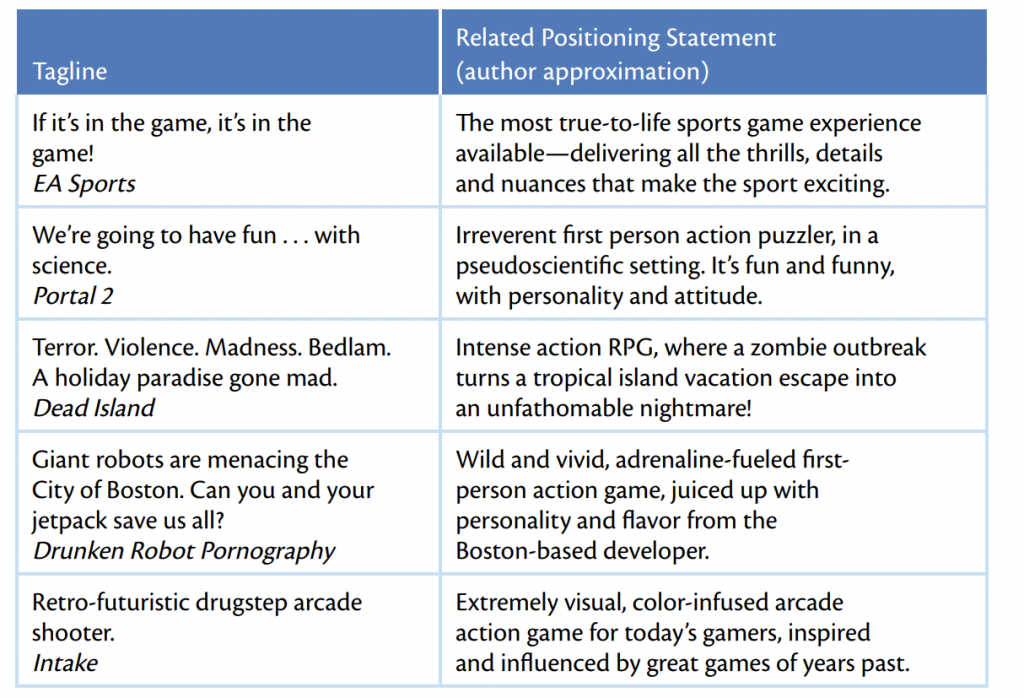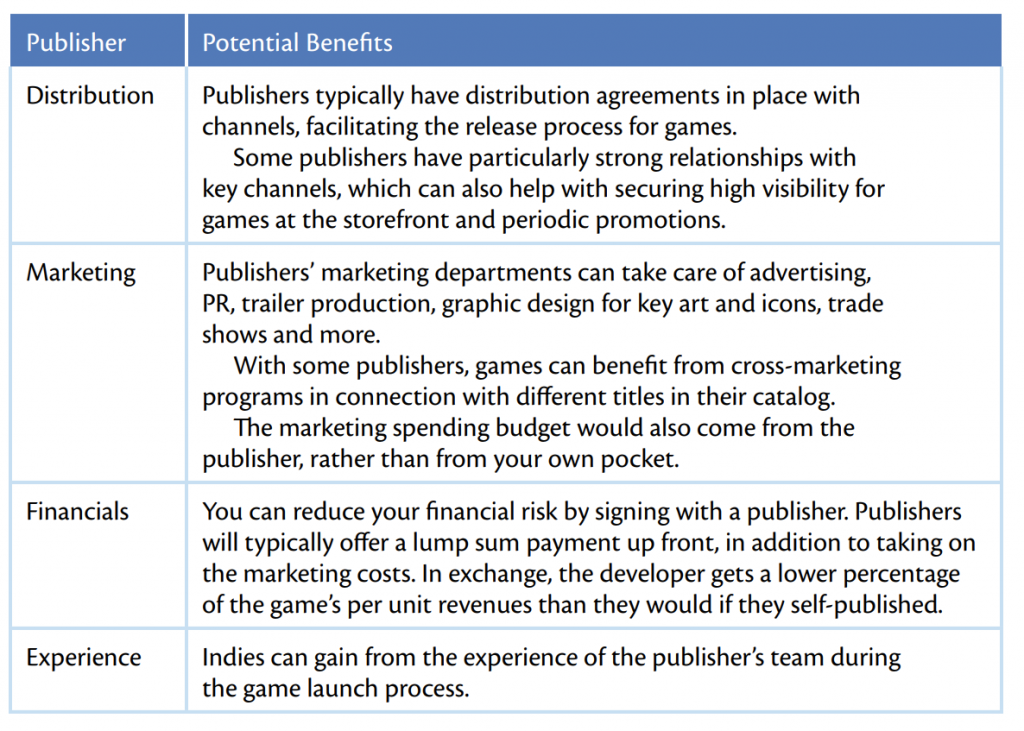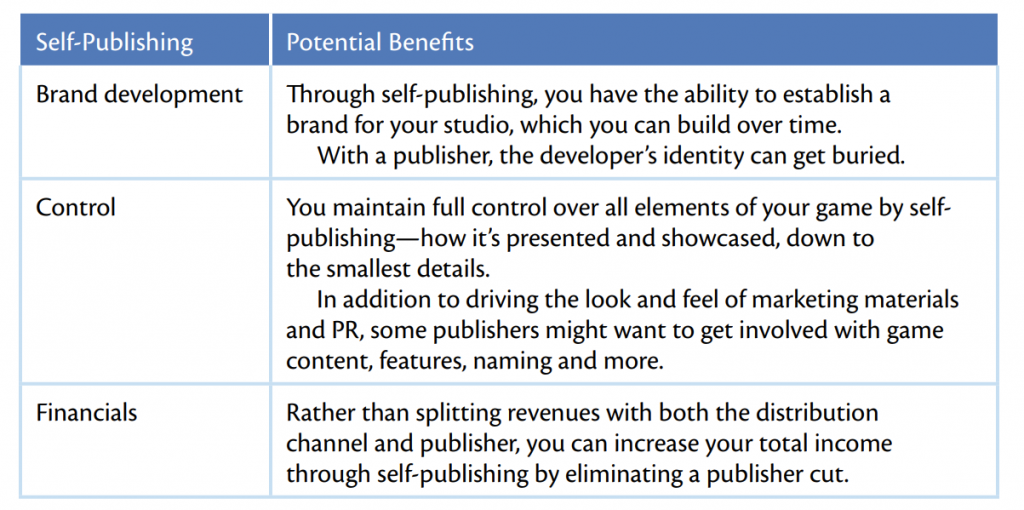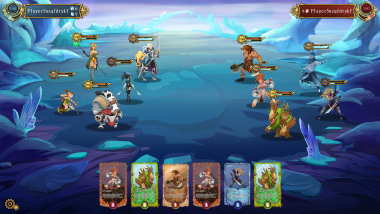Since you’re delving into this guide, it’s evident you recognize the importance of marketing in the world of indie gaming. If you’re an indie game developer or simply a lover of indie games, here’s a tailored starting point to effectively market your masterpiece.
Indie Game Marketing Essentials
Given that marketing strategies can be diverse and differ significantly among various indie games, it’s crucial to initiate with foundational concepts. This section introduces you to the “Indie Game Marketing Essentials” — pivotal principles tailored for the indie gaming universe. These principles aid in strategizing your promotional endeavors. Whether you’re an independent indie game developer choosing to market solo, in collaboration with a team, or through a publisher dedicated to marketing, understanding these pillars early on is beneficial.
Describing Your Indie Game
Begin with crafting a succinct description of your game, commonly dubbed the “elevator pitch.” This pitch for your indie game should encapsulate your game’s core appeal within two or three sentences, detailing what makes it intriguing and captivating in the vast sea of indie games. To genuinely pique interest in your creation, it’s essential to hone in on its unique attributes and convey them efficiently.
Avoid the pressure of perfecting your pitch immediately or aiming for an ultra-catchy tagline. Striving for immediate perfection can halt creativity. It’s natural to revise and tweak your description multiple times before it resonates with potential gamers or partners. Start by noting down specific phrases, attributes, or points related to your game. Expand upon these points and gradually refine them to crystallize your game’s essence. Remember, your description should spotlight what’s unique about your game and not be so generalized that it could apply to numerous other indie games.
Pro Tip for Indie Game Developers: In your initial attempts at a game description, let your ideas flow. Don’t aim for that ultimate, groundbreaking line instantly; that often leads to a creative block.
Crafting the Perfect Indie Game Description
Let’s illustrate with a game description. Can you pinpoint which game this is? In this puzzle adventure, seven distinct colored blocks consistently tumble from above. Your task? Arrange them to form complete horizontal rows. As you achieve this, the rows vanish, and the blocks above shift down. However, with time, these blocks descend at a swifter pace. The challenge ends when there’s no more room for blocks to drop.
A more concise elevator pitch for this could be: Challenge yourself to swiftly match and position descending colored blocks, preventing them from reaching the screen’s top!
Positioning: Carving a Unique Niche in the Indie Game Market
Positioning can be defined as a strategic approach to create a mental image of your game in a player’s mind.
In essence, positioning determines how your indie game stands out against its competitors in your target niche, emphasizing what makes it distinct or how it compares. In the indie game world, these unique qualities are often called “differentiators.”
Your positioning statement, typically one or two sentences, should encapsulate your game’s main allure concerning its market stance. These statements are precise and underscore the primary traits making your game both unique and enticing. Consider the broader indie game landscape – prior genre-defining games, the game’s category, and anticipated releases during your game’s launch. This context will help define the unique market space your game occupies.
Pro Tip for Indie Game Developers: A quick check on your game’s positioning is to ask: Could this statement fit other indie games, past or present? If the answer is yes, it’s time to refine your positioning statement or even reevaluate some game elements.
The promotional text for “Super Meat Boy” vividly encapsulates the game’s quirky essence and distinctiveness, stemming mainly from the creators’ vivid creativity and sense of humor: “Super Meat Boy presents a challenging platform adventure featuring a lively meat cube hero on a mission to rescue his bandage-made girlfriend from a wicked tuxedo-clad fetus inside a jar.”
Positioning Statements versus Taglines
It’s essential to distinguish between positioning statements and taglines. While positioning statements set the strategic direction, taglines are catchy, attention-grabbing one-liners crafted to pique interest and promote the game. Think of a positioning statement as the blueprint that can inspire a tagline, as well as shape other promotional content. Generally, the broader audience doesn’t encounter positioning statements. However, they’ll undoubtedly encounter taglines – whether in trailers, advertisements, or promotional write-ups.
Below are some sample taglines from the gaming world, spanning both indie and major releases. To provide perspective, the adjacent column deconstructs potential positioning statements that might have birthed these taglines.

Distinctive Selling Point (DSP): What Sets This Game Apart?
In the initial phases of crafting a marketing strategy, many marketers pinpoint a distinctive selling point (DSP). At its core, a DSP addresses the pivotal question: Why should players choose this game over others? A handy definition for a DSP is as follows:
• The game presents a standout offer to its potential players. Instead of vague promises or empty rhetoric, the promotional materials for the game effectively communicate: “Choose this game, and here’s precisely why.”
• This proposition is unparalleled; no other game offers the same experience. • To draw players and spark interest, the proposition needs to be genuinely captivating.
The DSP requires genuine reflection and transparency. It’s not enough to label your game as the “ultimate” experience, “the best” or “unique” based solely on your ambitions. Best practice advises that you identify the DSP even before the game’s development begins. Contemplate: What will make players gravitate towards your game? Why is it remarkable? How will it differentiate itself? Why would someone be enticed to play it? This level of candid introspection early on can significantly influence the game’s developmental direction.
Laying the Groundwork for Your Marketing Strategy
To augment the communication strategies already discussed, your foundational marketing elements should encapsulate:
Game Genre and Style: While leveraging traditional game genres can provide a quick way to explain gameplay, they can sometimes fall short. Some games align neatly into established categories, such as fighters, platformers, or first-person shooters. Others might blend genres in a manner that still captures their essence, like action-RPG or sports-simulation. It’s essential to ponder whether using genre labels accurately portrays your game’s essence. Sometimes, these labels might evoke a different image than intended.
Alternatively, rather than sticking to conventional genre tags, you could describe your game using unique phrases. For instance, emphasizing a “narrative-focused” or “rich character” journey, or spotlighting an innovative gameplay twist.
Remember, as your game nears its launch date, distribution platforms will typically request a genre classification, ensuring your game is featured in the right section of their marketplace.
Identifying Your Audience
Whom do you envision playing your game? What demographic are you targeting? Is the game designed for a dedicated gamer engrossed for hours daily? Or is it for casual players who might engage a few times weekly or monthly? Perhaps it’s a quick diversion for those idle moments waiting in queues or for friends?
Are you targeting teenagers, young adults, or children? Is there a specific gender appeal?
Resist the urge to declare, “My game is for everyone!” By precisely identifying your target audience upfront, you can tailor the game to cater to their preferences. This focused approach also aids in shaping your promotional strategies, ensuring you reach the right set of potential players rather than a vague, undefined audience.
Many game creators engage various groups with their prototypes, assessing which demographic responds most positively.
The Marketing Quartet
Marketing aficionados traditionally speak of the “four Ps”: product, price, promotion, and place. These pillars have guided marketers for ages.
- Product: This pertains to the game’s essence. Who’s the intended audience? What distinguishes it? What’s its core allure?
- Price: Although the term is straightforward, finalizing the game’s price can entail myriad considerations. It could range from an affordable mobile game meant for impromptu purchases to a premium-priced immersive console experience, or something entirely different.
- Promotion: As you craft your marketing blueprint, you’ll pinpoint the primary channels and strategies to champion your game. Are you leaning towards PR, viral word-of-mouth, social platforms, or paid ads? This subject is a recurrent theme in this content.
- Place: The avenues through which you distribute your game—whether digital platforms or potential physical retail outlets—significantly influence its success and how you should strategize your marketing efforts.
Deciding on the Launch Date
The choice of your game’s release date can have a profound effect, and it’s vital to weigh the pros and cons of each potential timeframe. Considerations might include:
Seasonal Trends: Historically, a chunky 50% to 60% of annual gaming revenues are made between October and December, riding the holiday wave. But with this potential boon comes competition. These months are saturated with game releases, including major titles from AAA studios. If you’re launching your game during this period, it could be challenging to cut through the noise. While this doesn’t mean indie developers should completely avoid this window, it’s essential to consider these dynamics when deciding on a launch date.
Tip: Stay attuned to external dynamics when sketching out your marketing, announcement, and release plans. Consider factors like prominent holidays, events, and significant game releases.
Additional Timing Considerations: Delve into other calendar events that might influence your release timing. Major industry events like E3, significant holidays in primary markets (such as July 4th or Christmas), and global happenings (like political elections or the Olympics) can either work in your favor or against it. For instance, leveraging thematic elements for a release around Halloween might be beneficial. Conversely, releasing your game around December 31st or January 1st might prove challenging, given the year-end rush and extensive travel.
Competing Releases: It’s wise to keep tabs on the anticipated launch dates of other titles, especially those that might resonate with similar gameplay or themes as yours. This is particularly crucial when going toe-to-toe with major releases from established publishers.
Synchronizing Release Across Platforms and Channels: There’s significant merit in considering a simultaneous launch on various platforms and channels. By doing so, you amplify the game’s sales reach, catering to different platform inclinations of diverse gamers. The buzz, visibility, and momentum created can bolster your game’s presence across multiple systems.
On the flip side, spaced-out launches mean running individual campaigns for each platform release. It’s worth noting that launches following the initial one often don’t pack the same punch.
However, indie developers might find it challenging to juggle releases across multiple platforms simultaneously due to resource and time constraints. While staggered releases might seem daunting, they have been effective for some developers. These are just essential facets to mull over when mapping out your game’s release strategy.
Financials
It’s crucial to set aside a dedicated budget for marketing your game. Hoping to spend nothing on marketing isn’t practical. Also, deciding your marketing budget based solely on what’s left in your account isn’t a strategic choice. Conversely, having deep pockets doesn’t guarantee success if you’re spending on ill-planned initiatives.

Effective marketing doesn’t always require a hefty budget. Here’s an example Excel sheet to manage your indie game budget. This guide offers insights to help choose the best marketing strategies for your game, even on a tighter budget. To determine a suitable marketing budget, consider:
- Game Development Costs: Factor in your direct expenses and evaluate the time invested by you and your team. Assign a fair hourly rate for your team’s effort, and multiply it by the actual hours put into the project. This will give you a clear understanding of your game’s production cost.
- Revenue Targets – Tiered Approach: Determine your revenue objectives by taking into account your game’s expected pricing and sales forecasts. Additionally, factor in any deductions, such as those for distribution channels or publishers. It’s beneficial to establish a tiered framework for your revenue targets—namely, a conservative estimate, a moderate one, and an optimistic one. What’s your break-even point? Do you have specific profit aspirations?
- Loss Acceptance: If you’re open to the idea of not turning a profit on this particular game, be precise about the maximum loss you’re willing to incur. Keep this figure at the forefront when formulating your marketing budget.
- Reference Budget Allocation: As a benchmark, many suggest allocating between 8% to 15% of your projected revenues towards marketing. While this figure is often associated with larger entities, it shouldn’t be viewed as a strict rule. Your ultimate marketing budget should be flexible. Don’t feel obliged to spend up to your budget cap if it doesn’t lead to smart investments. Conversely, don’t shy away from exploring promising marketing opportunities, even if they surpass your initial allocation.
To Publish or Self-Publish?
Early in the game development journey, you’ll be faced with crucial decisions on how to introduce your game to potential players. Some developers opt for a publisher while others take the self-publishing route. Moreover, there’s the matter of handling your marketing strategies – will you employ a dedicated team, outsource, or take on the challenge yourself?

Choosing Between a Publisher and Self-Publishing
The path to self-publishing is becoming increasingly accessible, especially with the proliferation of digital storefronts. Yet, some still find allure in the support structure offered by game publishers. It’s worth noting that financial arrangements with publishers can differ widely. For instance, a deal might entitle the developer to just 25% of the net revenues or even more. This can substantially influence the profitability of your studio, especially once distribution costs, taxes, and other unforeseen expenses come into play.

Making the Right Choice for Your Studio
The onus is on you to define what’s essential for your game’s success and your studio’s future. Perhaps, you could contemplate a hybrid approach – partnering with a publisher for one project and independently releasing another.
If you lean towards working with a publisher, it’s crucial to thoroughly vet potential partners. Engage with their existing or past developers to gather insights, examine their track record, and understand the marketing resources they commit to their games. There have been instances where publishers sign multiple games to bolster their catalog but fail to allocate adequate attention or resources to each game, especially nearing launch.
When entering agreements with publishers, strive for a flexible partnership. Ensure you maintain control over vital elements like intellectual property, distribution rights for future platforms, sequels, and so forth.
Navigating Game Marketing: To DIY or Not?
The Self-Marketing Route Many indie game developers have successfully taken the reins of their own marketing. Especially in PR, a personal touch can be potent. Sharing your journey, inspirations, and authentic self with journalists can often resonate. While this book is designed to guide you if you choose to self-market, bear in mind that without the expertise of a seasoned marketer, it can be a demanding endeavor. Given your already packed schedule, adding marketing to the mix can be overwhelming. Sometimes, it’s wise to delegate marketing to experts so you can focus on what you do best: game development. With this book as your guide, even if you entrust marketing to someone else, you’ll be able to engage in informed discussions on the topic.
Exploring Marketing Personnel Options
- In-house Marketing Talent: Consider starting with a part-time marketer. Alternatively, someone on your team might have the aptitude and time to juggle development and marketing. Create a shared email like “[email protected]” that multiple team members can access. This ensures continuous communication, a vital element for success. Remember: responsiveness is key. Even a brief acknowledgment is better than silence.Quick Tip: Always be prompt in communication. A simple response is better than delayed or no reply.
- Engaging External Experts: The market offers a plethora of specialists, from individual freelancers to full-fledged agencies. Some might be PR aficionados, while others are advertising gurus or holistic product marketing experts. If you’re contemplating this direction, consult with a few to determine the best fit, factoring in your budget.
Scaling Your Marketing Strategy
As your game studio flourishes, ponder over a sustainable marketing strategy. You could opt for a sizable agency, ensuring continuity with the personnel managing your account. Alternatively, bringing on a full-time marketer to your team has several benefits:
- Direct engagement between the press, partners, and the studio is often appreciated.
- An in-house marketer typically has a deep connection to your vision and projects. They’re agile, can pivot swiftly, and are intimately familiar with the game’s nuances.
Author’s Insight: The perspective of this section is shaped by the author’s experience as an in-house staff member.
Homework for You:
- Marketing Blueprint: Design a marketing strategy for a game. This could be a game you’re contemplating, currently developing, have launched, or even one you’ve enjoyed playing.
- Craft Your Game’s Story:
- Devise a positioning statement, elevator pitch, and tagline.
- Test these with friends, family, or peers.
- Design a quick visual combining your game’s imagery with potential taglines.






